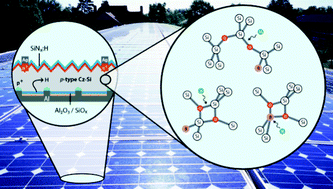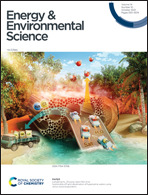Atomic structure of light-induced efficiency-degrading defects in boron-doped Czochralski silicon solar cells†
Abstract
Boron-doped Czochralski (Cz) Si is the most commonly used semiconductor in the fabrication of solar cells. The minority carrier lifetime of boron-doped Cz Si decreases upon exposure to light due to B–O-related defects, which reduce the performance of ∼109 solar modules worldwide. Using electron paramagnetic resonance (EPR), we have identified the spin-active paramagnetic signatures of this phenomenon and gained insights into its microscopic mechanism. We found a distinct defect signature, which diminished when the degraded sample was annealed. The second signature, a broad magnetic field spectrum, due to the unionized B acceptors, was present in the annealed state but vanished upon light exposure. These observations show that, on degradation, nearly all the ∼1016 cm−3 B atoms in Cz Si complexed with interstitial O atoms, whereas only ∼1012 cm−3 of these complexes created defects that were recombination-active. The formation rate of these recombination-active defects correlated with the decay of the minority carrier lifetime. The line shape parameters linked these defects to both B and O impurities in Cz Si.



 Please wait while we load your content...
Please wait while we load your content...
